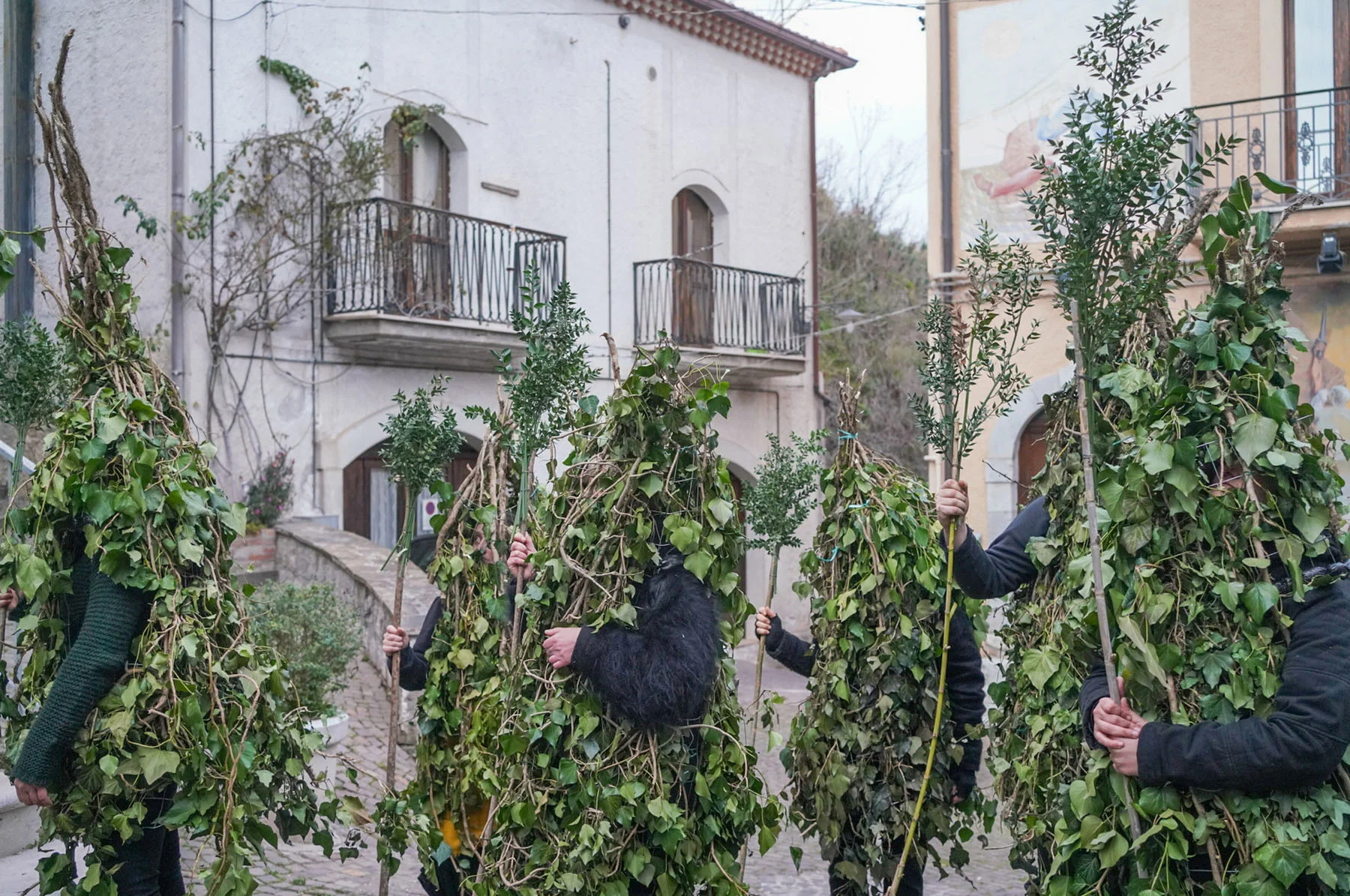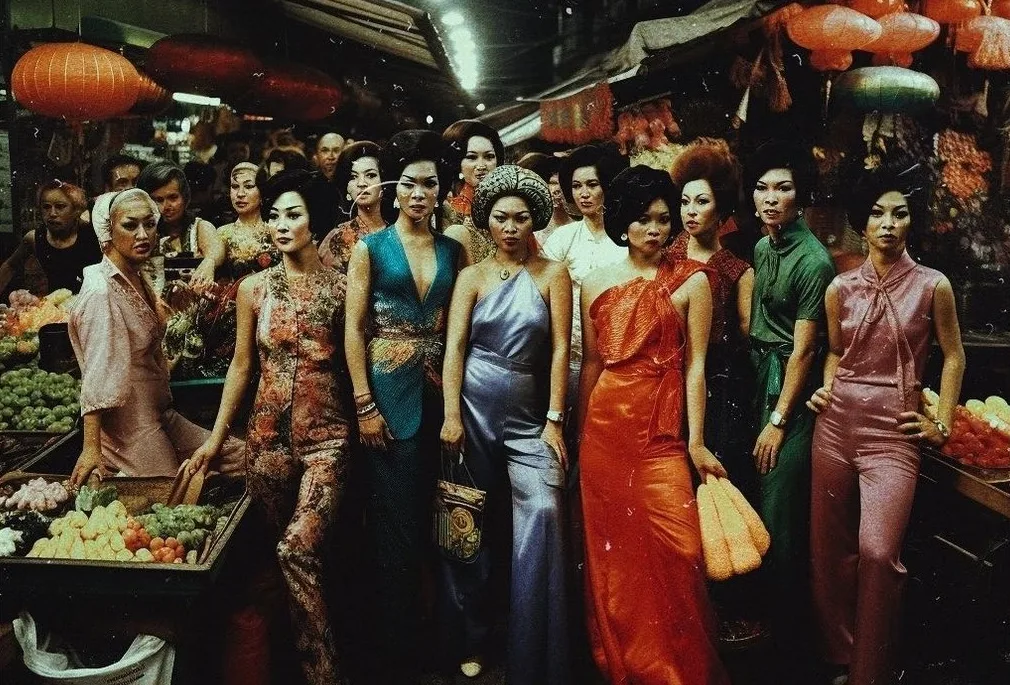
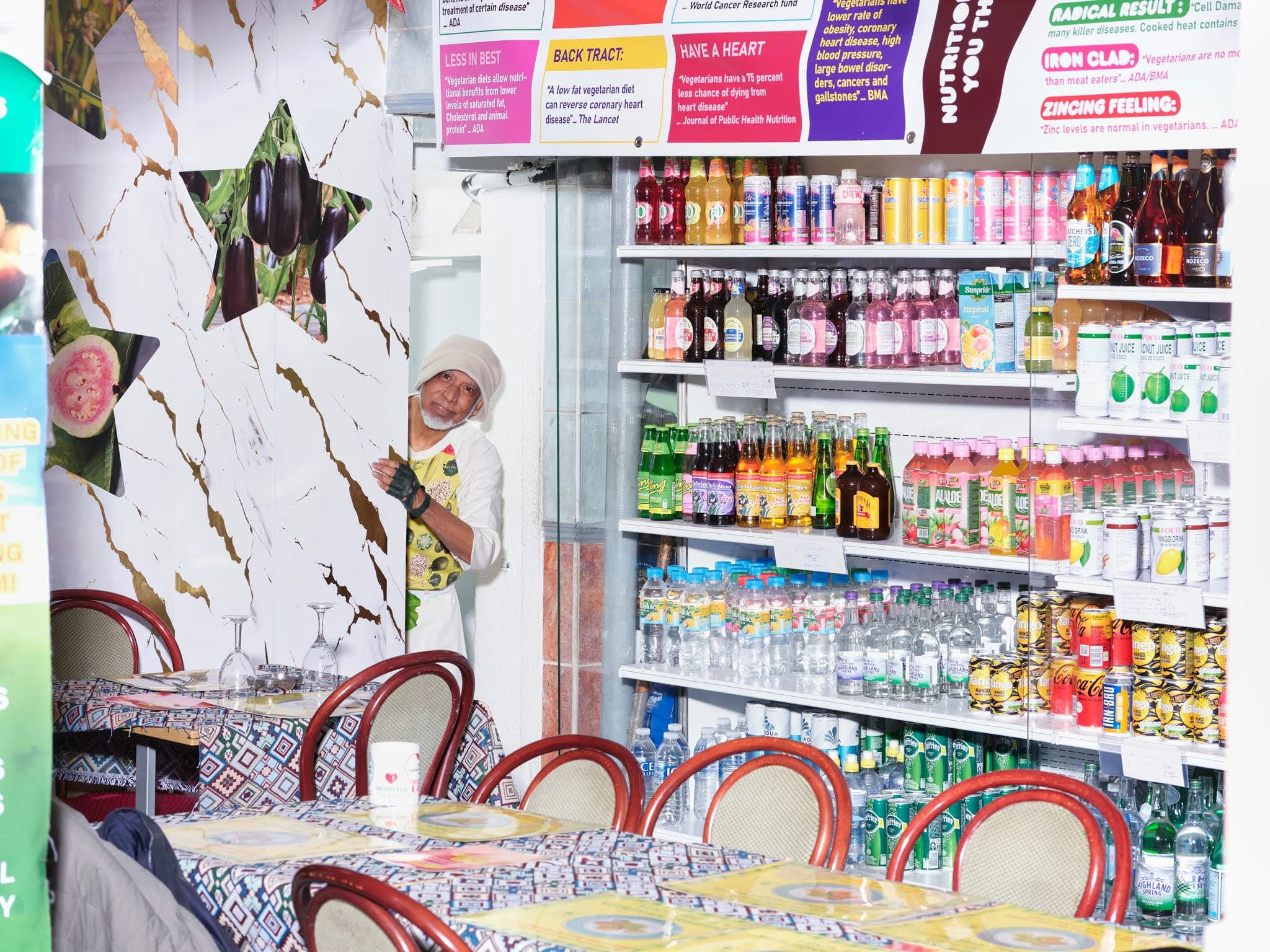
After decades of seeing South Asian men be caricaturized in mainstream media, costume designer and stylist Zakir Khan decided to create a series that captures the evolving, vivid and proud personality of the uncles around him. Together with photographer Jordan Core, he tells Darshita Goyal how “Uncle’s House” brings lightness and joy at a time when immigrants are being confronted with increasing hostility.
Picture an older South Asian man and the image in your head usually fits two extremes: conservative and clad in a traditional kurta pyjama or comically dressed in buttoned-up suits with funky ties. When costume designer and stylist Zakir Khan was hired to dress desi uncles in a British feature film, he wanted to push the envelope of what is expected. “We planned a really great outfit for one of the uncles named Murali but the director thought it was a bit too much,” London-based Khan shares.
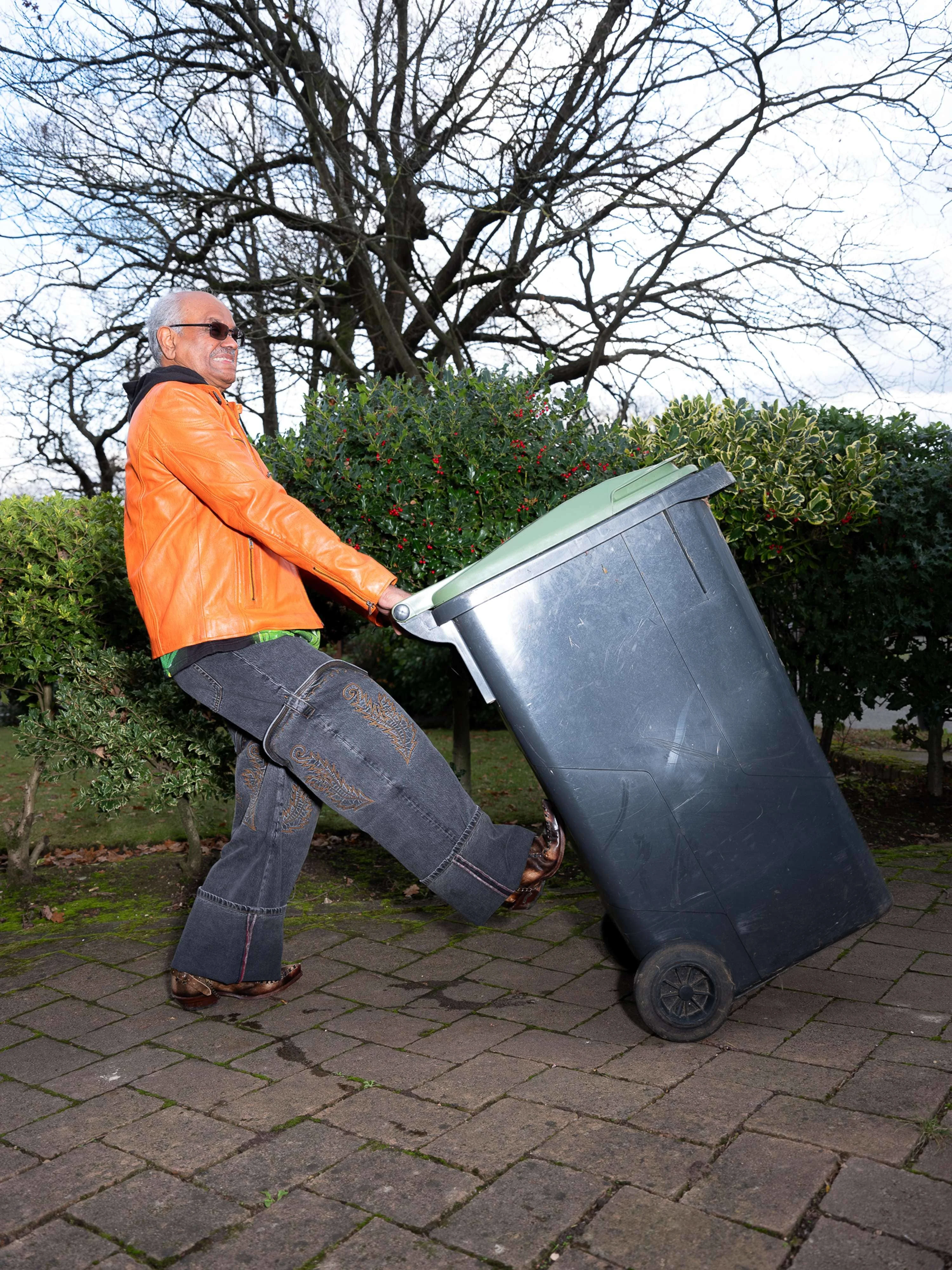
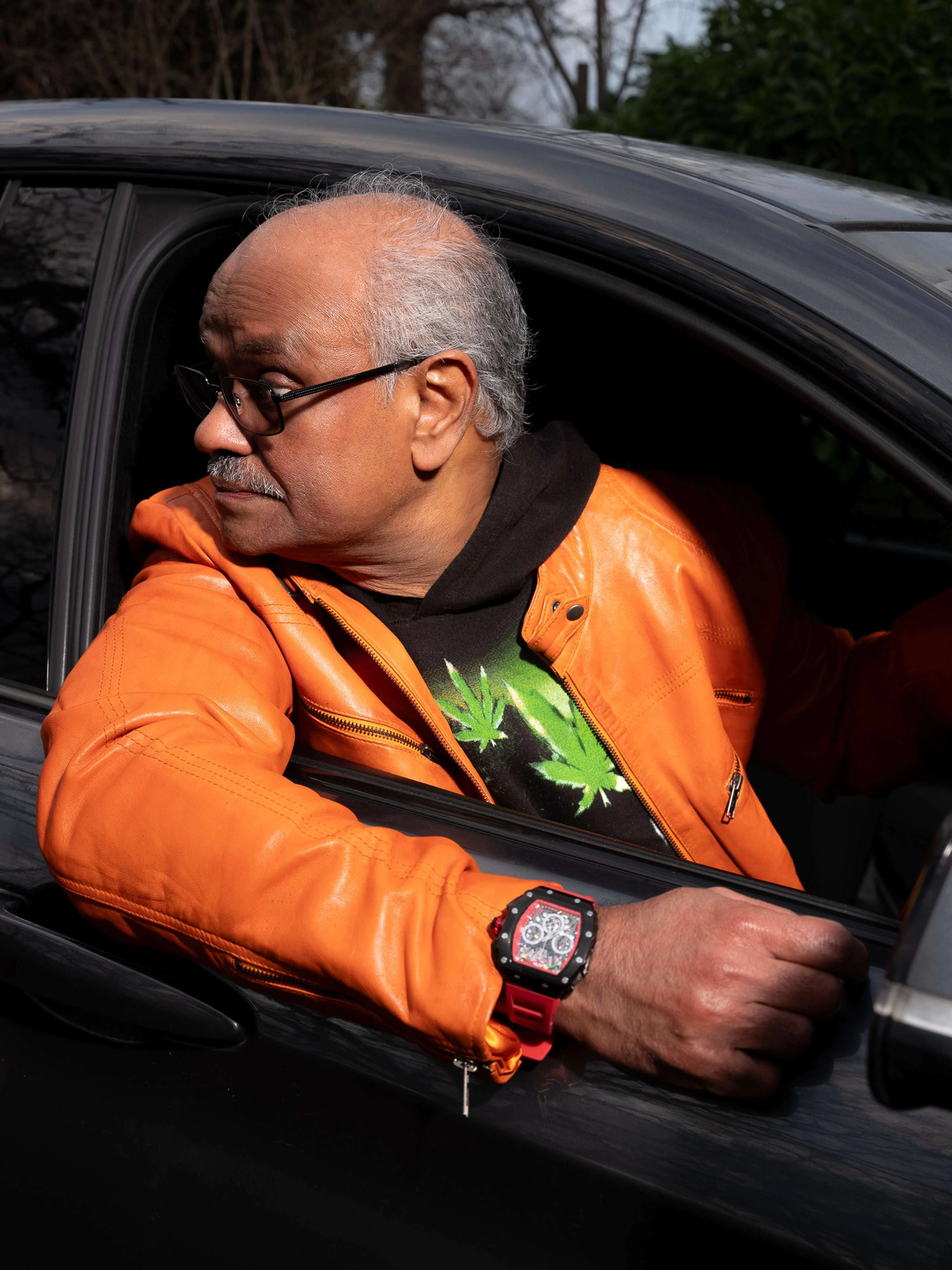
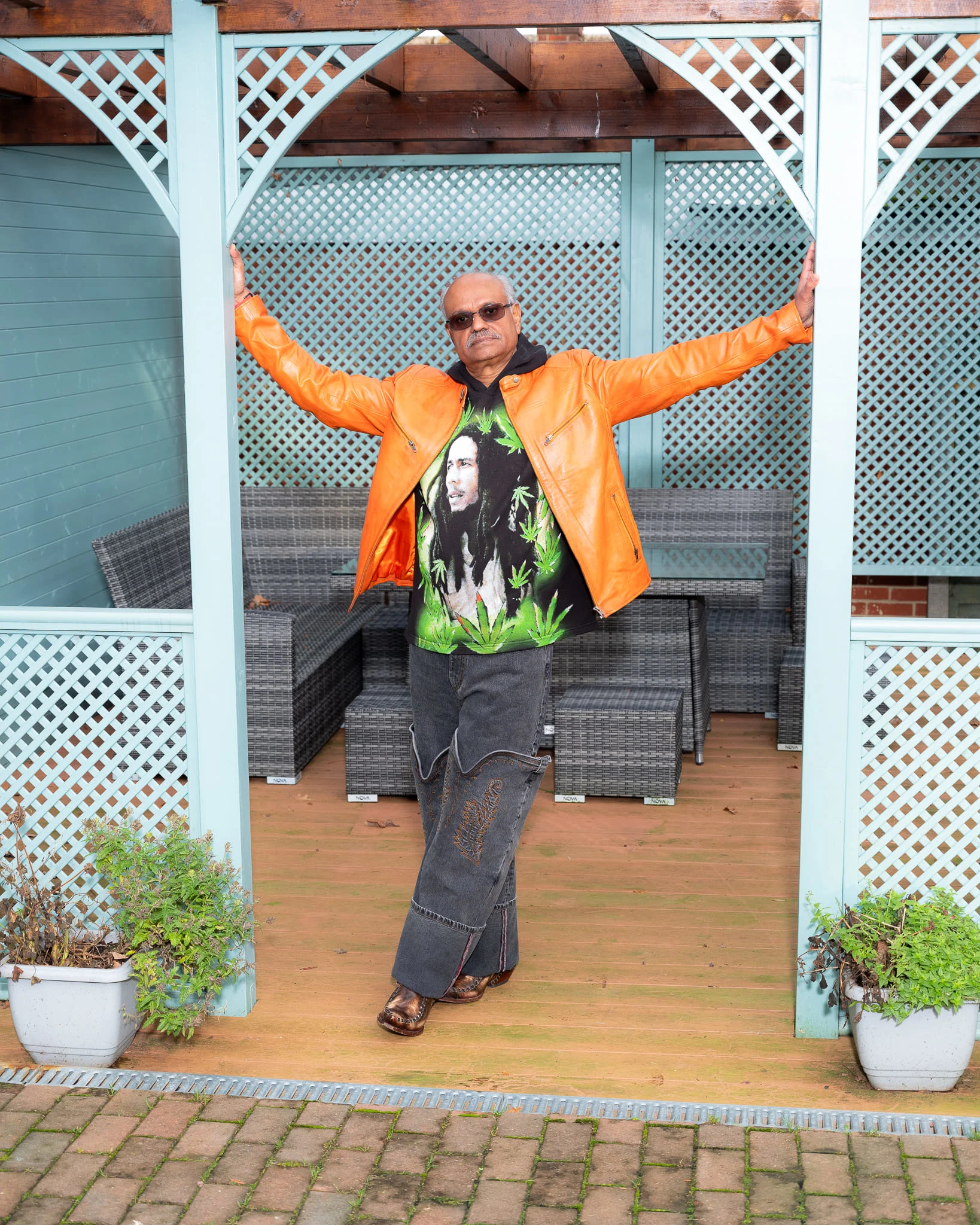
He describes the fit in question as a “more elevated version of what SA uncles in the West often wear: pointed shoes, denims and a leather jacket.” Except this time, the jacket was bright orange and layered over a Bob Marley hoodie with ganja leaves, while the pair of jeans were folded over at the hem to mimic cowboy boots. “I was just distraught because I knew that outfit was so empowering,” Khan says. It was at this point that Jordan Core, costume supervisor on the film and photographer by profession, suggested taking pictures of Murali styled in the outfit at his house instead. So in December 2023, the impassioned duo lugged the clothing and equipment an hour out to the suburbs of Chingford to shoot the uncle in his jazzed up costume.
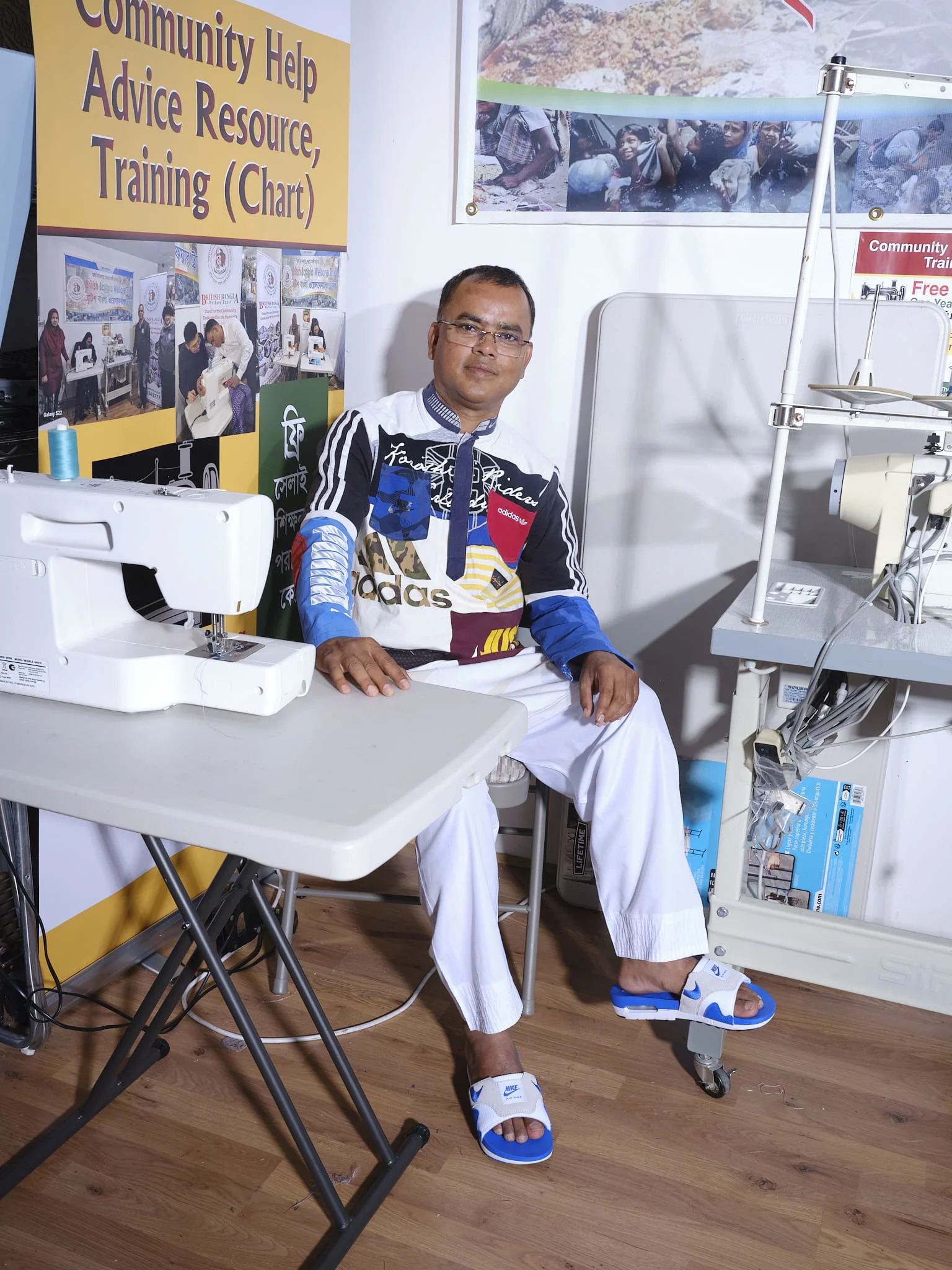
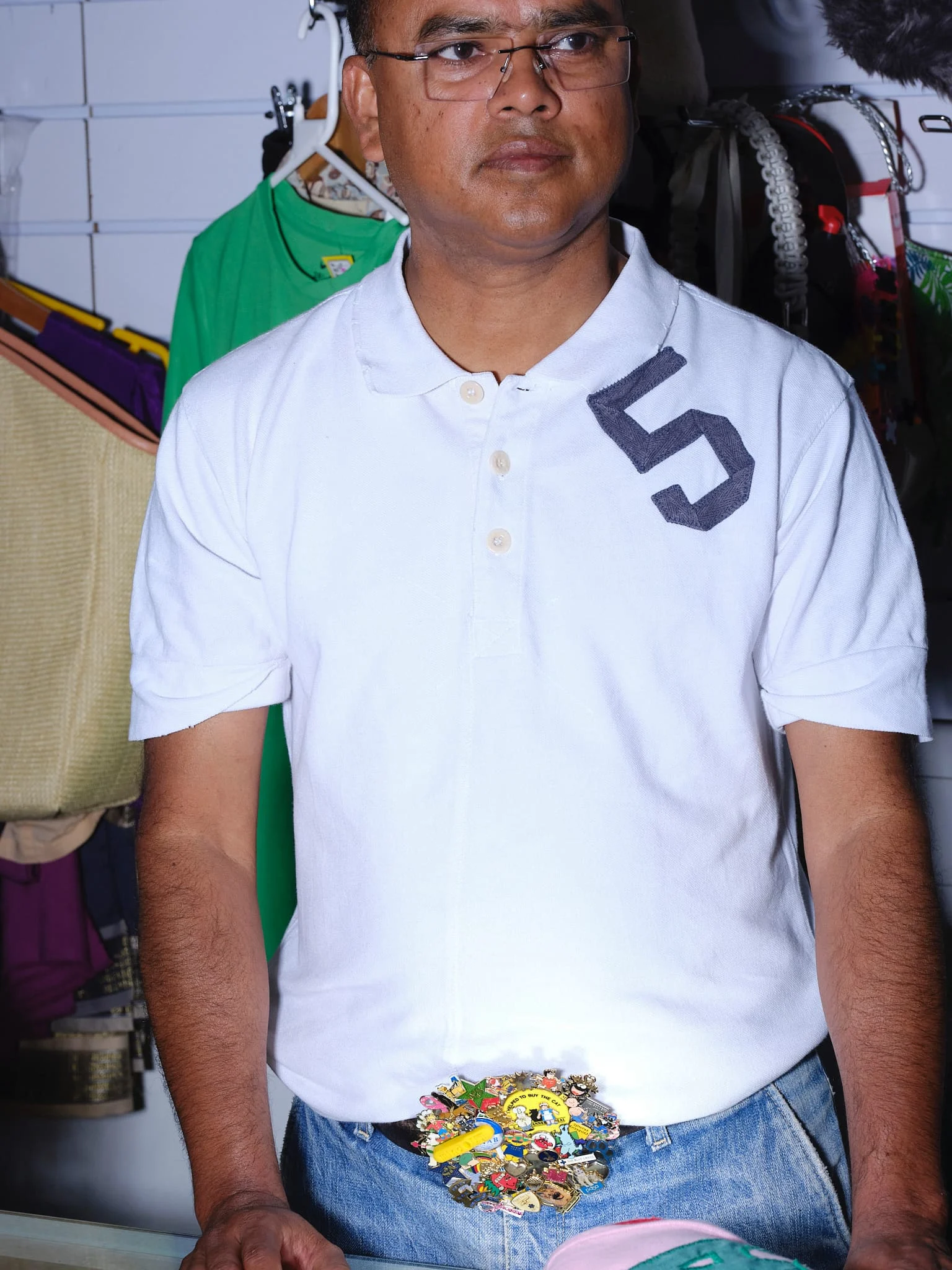
This series isn’t styling or photography for vanity’s sake, I want to flip the narrative of how SA men are seen in the West.
The resulting images capture Murali in a way you rarely see SA uncles: striking a smug pose at the entrance of his home, showing off his bright red and black watch while taking out the trash or lounging in front of the television with his booted feet thrown up on the couch. Murali takes on the role of a protagonist, no longer a sidelined supplementary character. He is a vision of rest and relaxation, a luxury that is hardly ever afforded to immigrants. This project marked the beginning of a larger series rightly titled “Uncle’s House.” Here, Khan and Core style and shoot SA uncles in their homes, or at their place of business, where they often wind up spending the majority of their lives, making a living in a country that isn't always kind to them.
“This series isn’t styling or photography for vanity’s sake, I want to flip the narrative of how SA men are seen in the West. In Britain recently, there is an increasing negativity towards immigrants, but people have come over and created really wonderful restaurants, tool shops, corner stores and more. I want to highlight their effort and their personality through the clothing and images,” Khan says, adding that Core’s signature bright, vivid style of photography complemented this narrative.
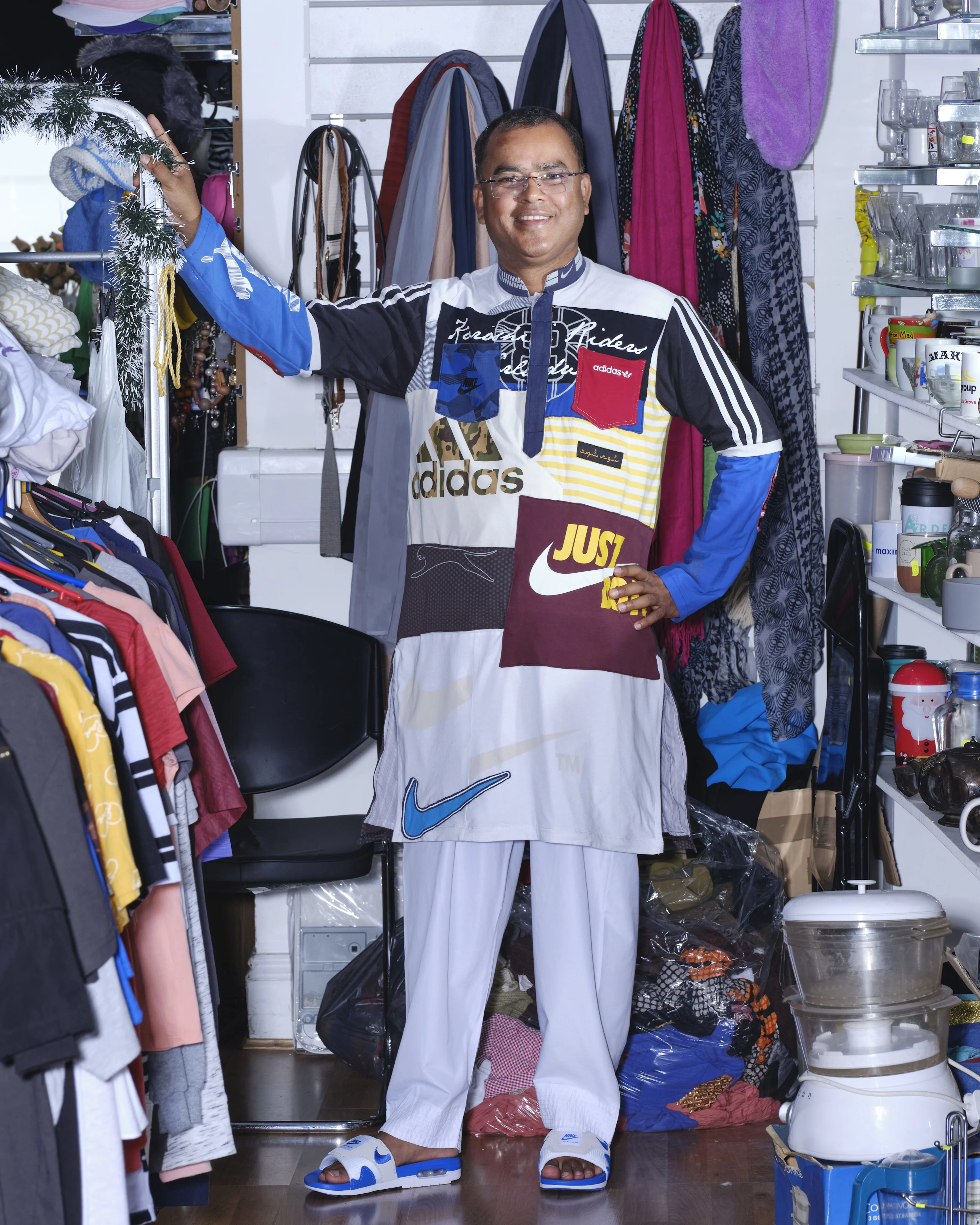
This comes through in the pair's most recent iteration for the series that stars Zaman, the founder of charity shop British Bangla Welfare Trust. The first outfit is a riff on how Bangladeshi men dress—smart upper wear, perhaps a polo tee and trousers, juxtaposed with casual flip flops. Only now, Khan styled the uncle in a shirt-kurta blend consciously repurposed from a range of vintage tees and jerseys from a bag of clothing the costume designer had donated to the charity shop. “To elevate it further, we got a cool pair of Nike Air Max sliders; it was SA but with a twist,” Khan explains.
Core also back-lit the glass shelves in the charity shop to whip up a sense of drama. “We wanted that light to reflect on his face through all the cups and create interesting effects,” the photographer says, adding that “Since we were shooting inside his shop, the space was confined and so we were more creative with the photography style. It was probably the shoot I’ve enjoyed the most so far.”
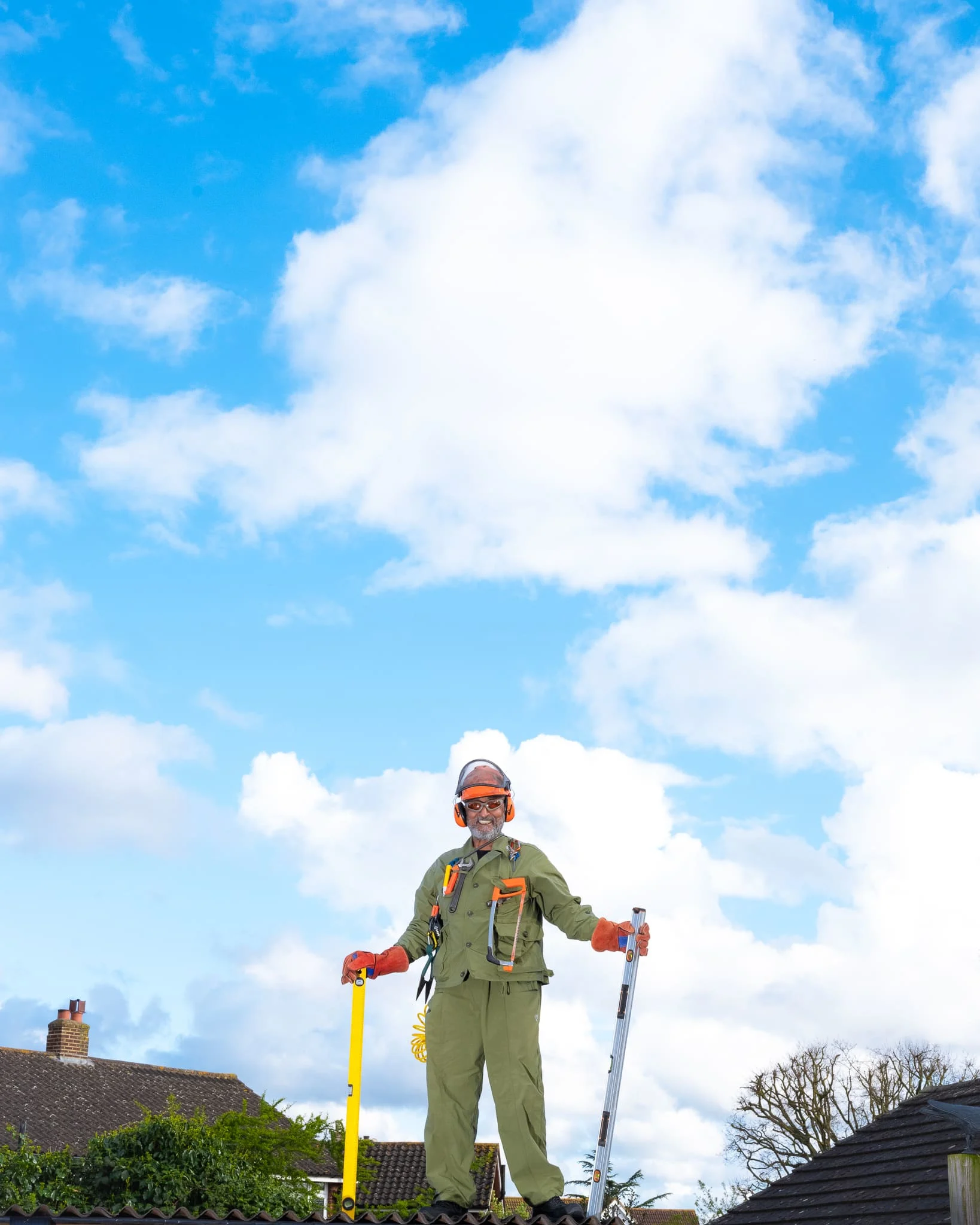
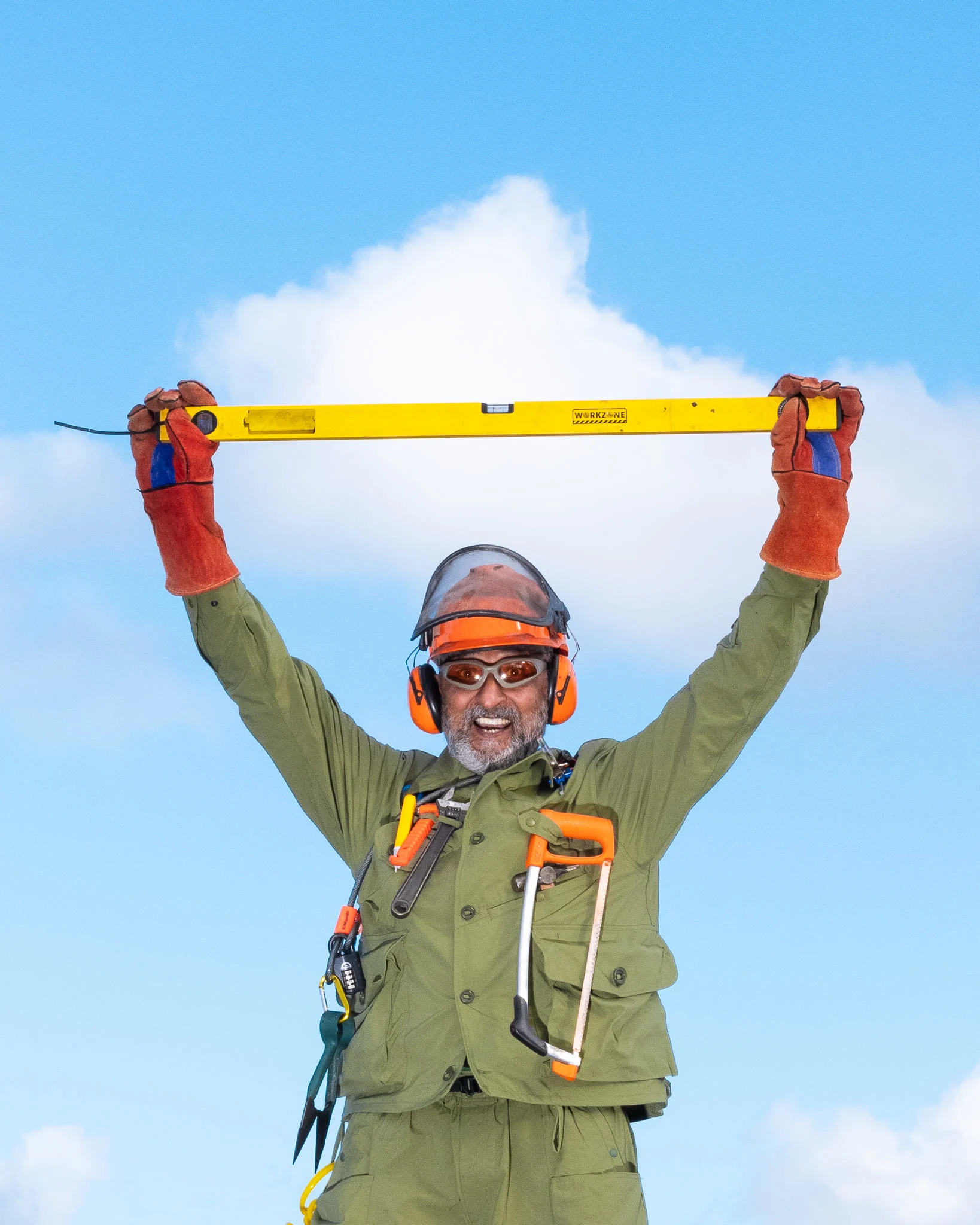
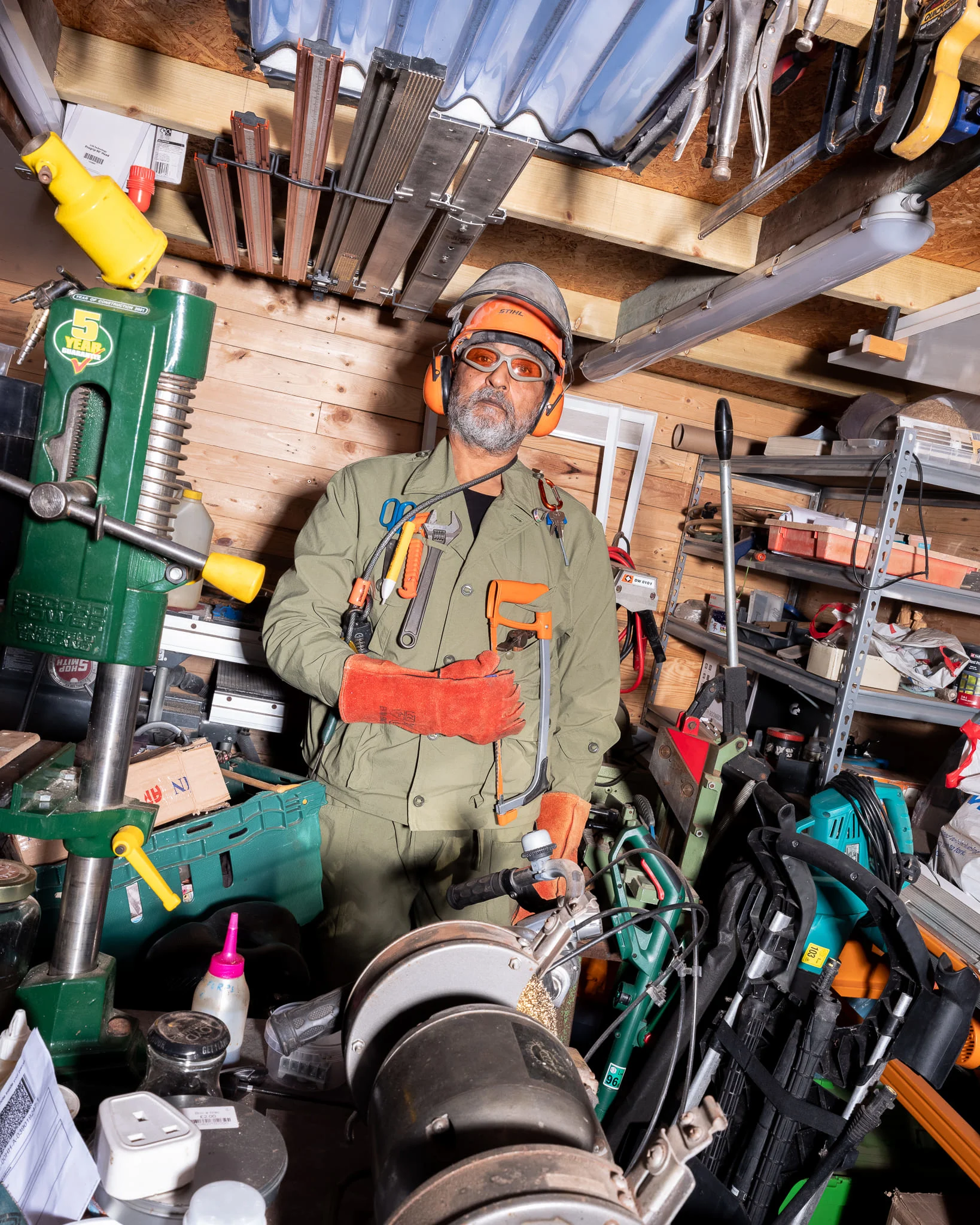
And it shows. Another look sees Zamaan in a Burberry shirt, a British staple for uncles in the 90s, paired with loud, pattern-rich Prada shorts. The photographer and stylist are quick to add that at first, the uncle was very conscious of being shot in knee length cut-offs. “Initially we swapped shorts for a pair of jeans,” Khan says. “But as he got more comfortable he really opened up to the idea.” It also helps that Core involves the uncles in the process, giving them a glimpse of the photographs on the little screen on his camera, reassuring them that the images will only go as far as they are comfortable with.
Every now and then, the duo face some resistance from their subjects, and they are acutely aware that this is rooted in historic apprehension. Pop culture has not always been kind to SA men. For decades, these characters have been written to blatantly meet the idea of who a brown man is from a white audience's perspective, and their creators did little in the name of authenticity or representation.
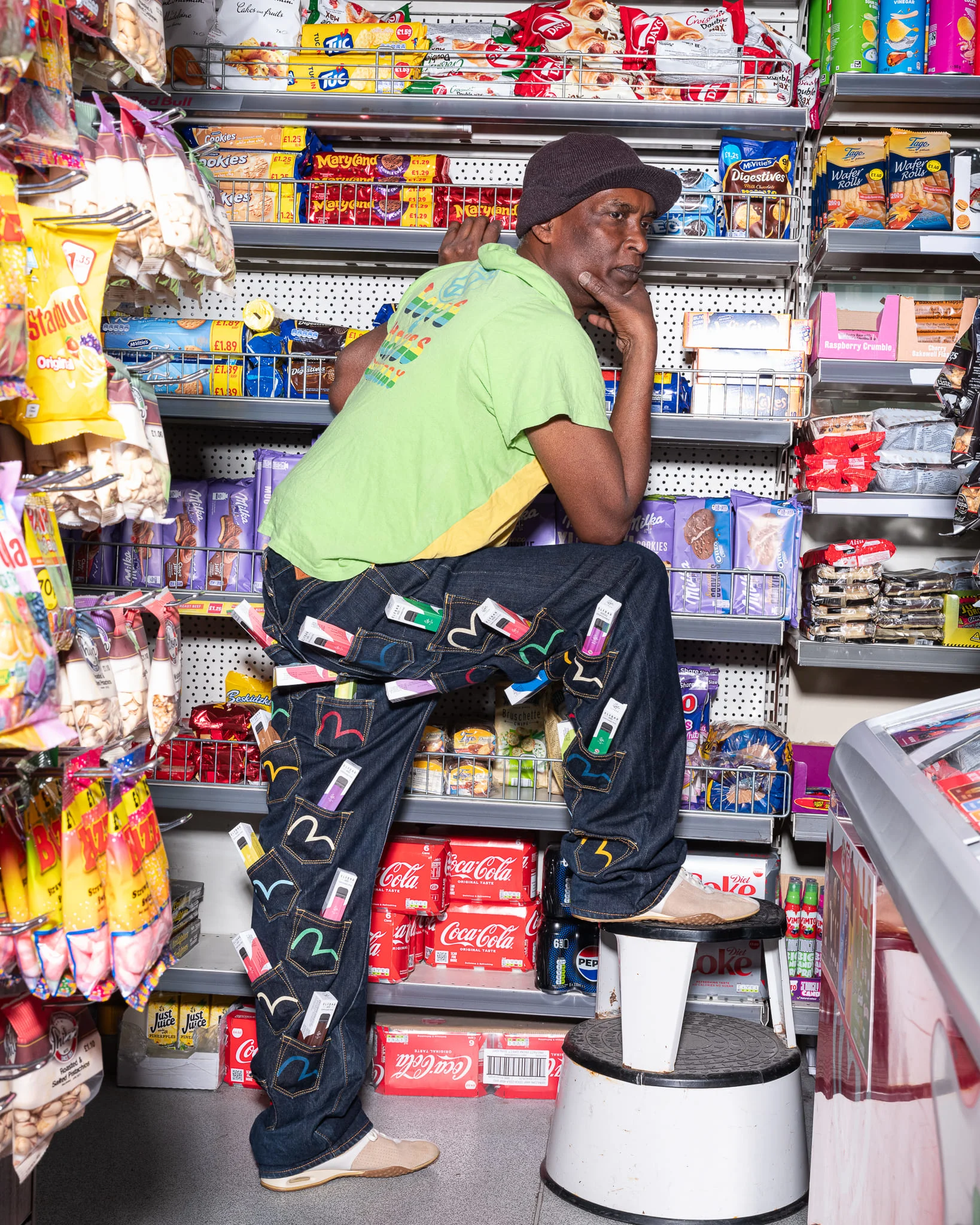
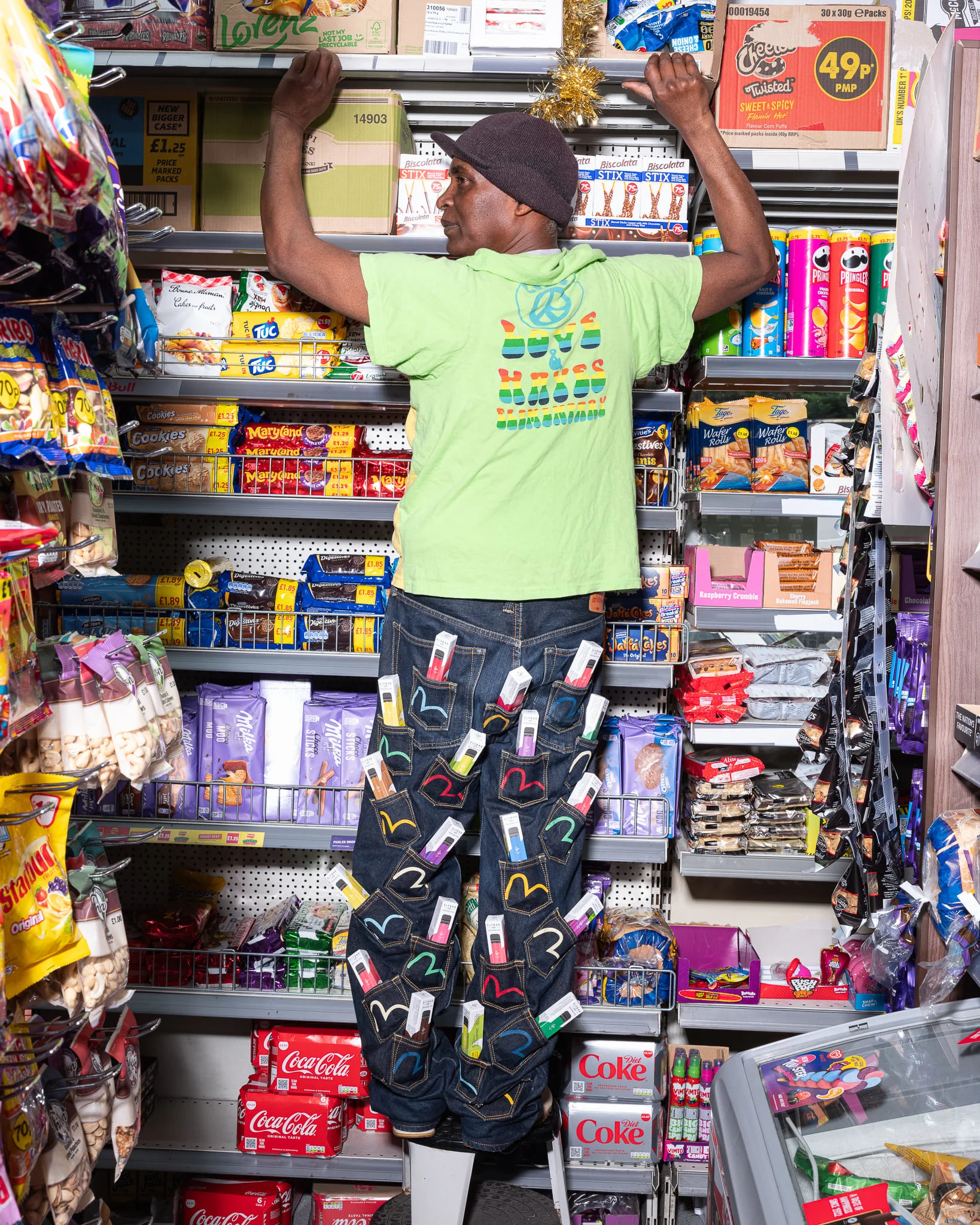
I hope one day everyone who is involved is able to… feel appreciated together.
“I’m British Pakistani and didn’t see any iconic Western character in fashion or film who made me feel like that person could be me. These depictions don’t even make us look good,” Khan confesses. “I want to use my passion for clothing, and Jordan’s love and passion for photography, to show SA uncles as someone 'cool' and 'aspirational'. We want to flip the narrative around how the western media—and in turn the younger generations of South Asians—see South Asian men. And I would love for the uncles to feel celebrated and empowered too.”
Even a fleeting glance at the “Uncle’s House” repertoire reveals this care. Sabir's House sees the DIY-loving uncle styled in khaki overalls and gear, posing on top of his shed's roof with the endless sky in the background. Mano, the owner of a newsagents, is styled in a chocolate brown hat, a pistachio colored tee and denims with 12 pockets, each filled with different flavored Elfbar vapes. One leg perched on a stool and his hand cupping his chin, the uncle stares into the abyss in deep thought. And for the creatives, the pose and the framing were just as intentional. “We want every image to be authoritative and we want the uncles to look strong and proud,” says Khan, “and Jordan has been pivotal in establishing this language of composition.”
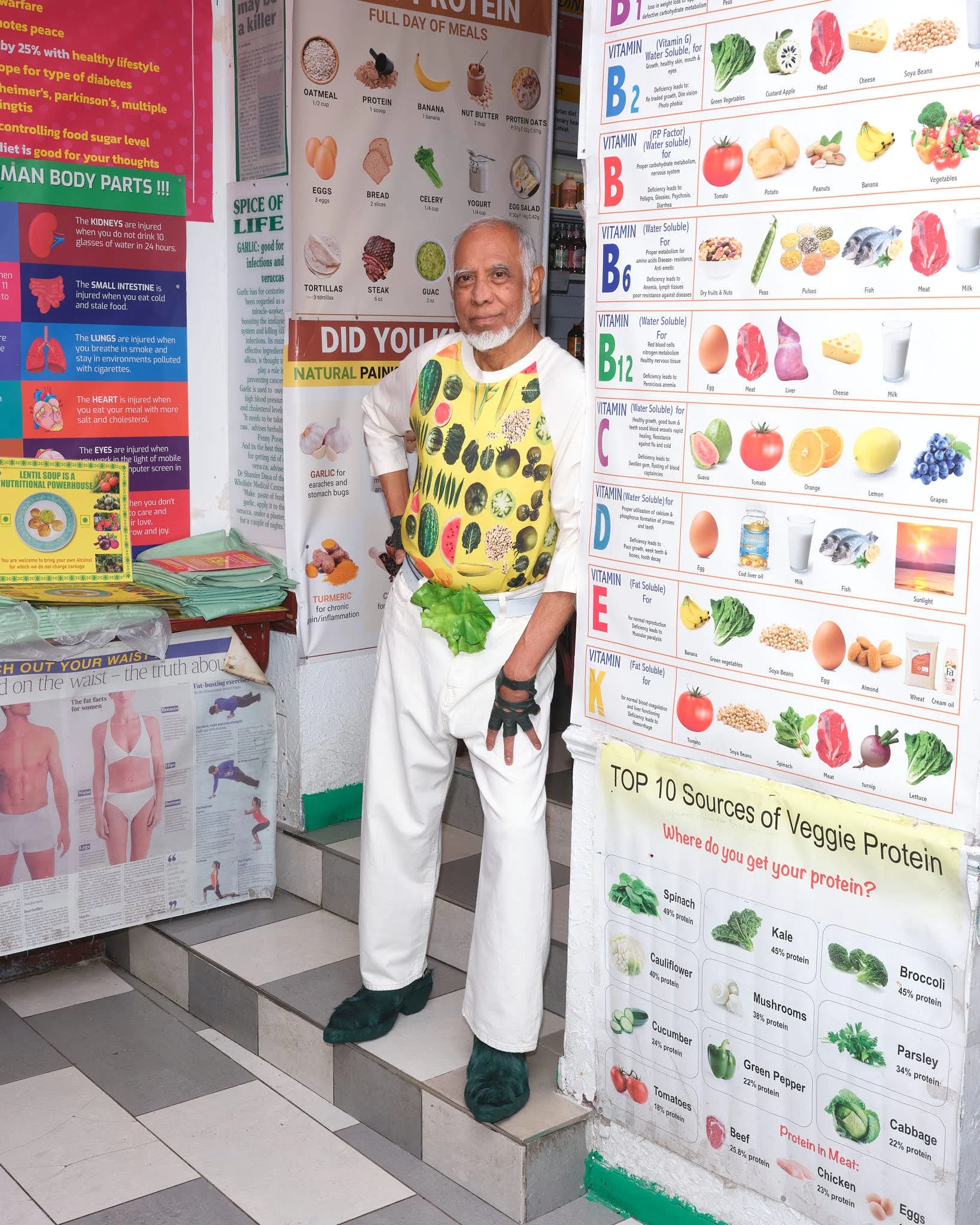
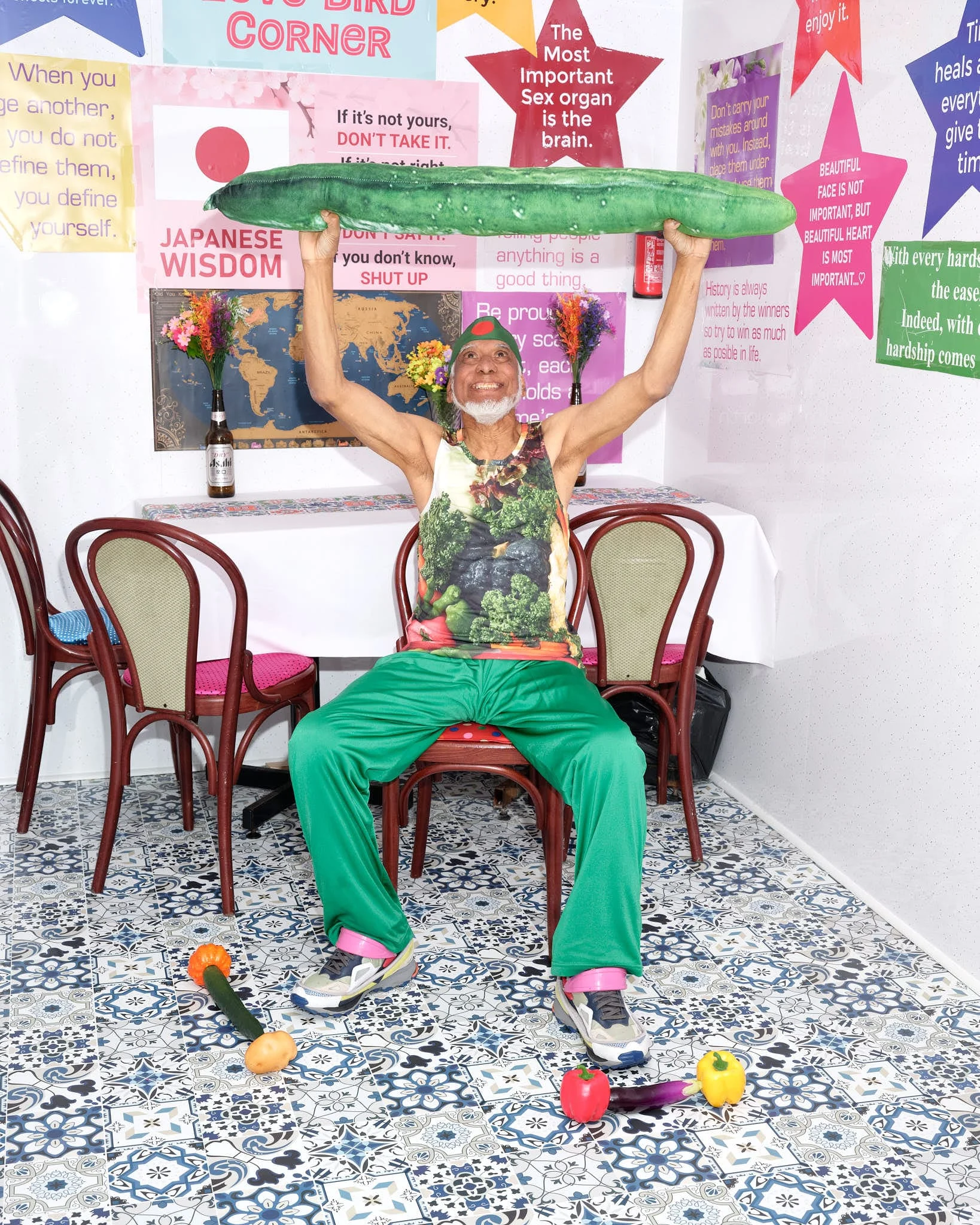
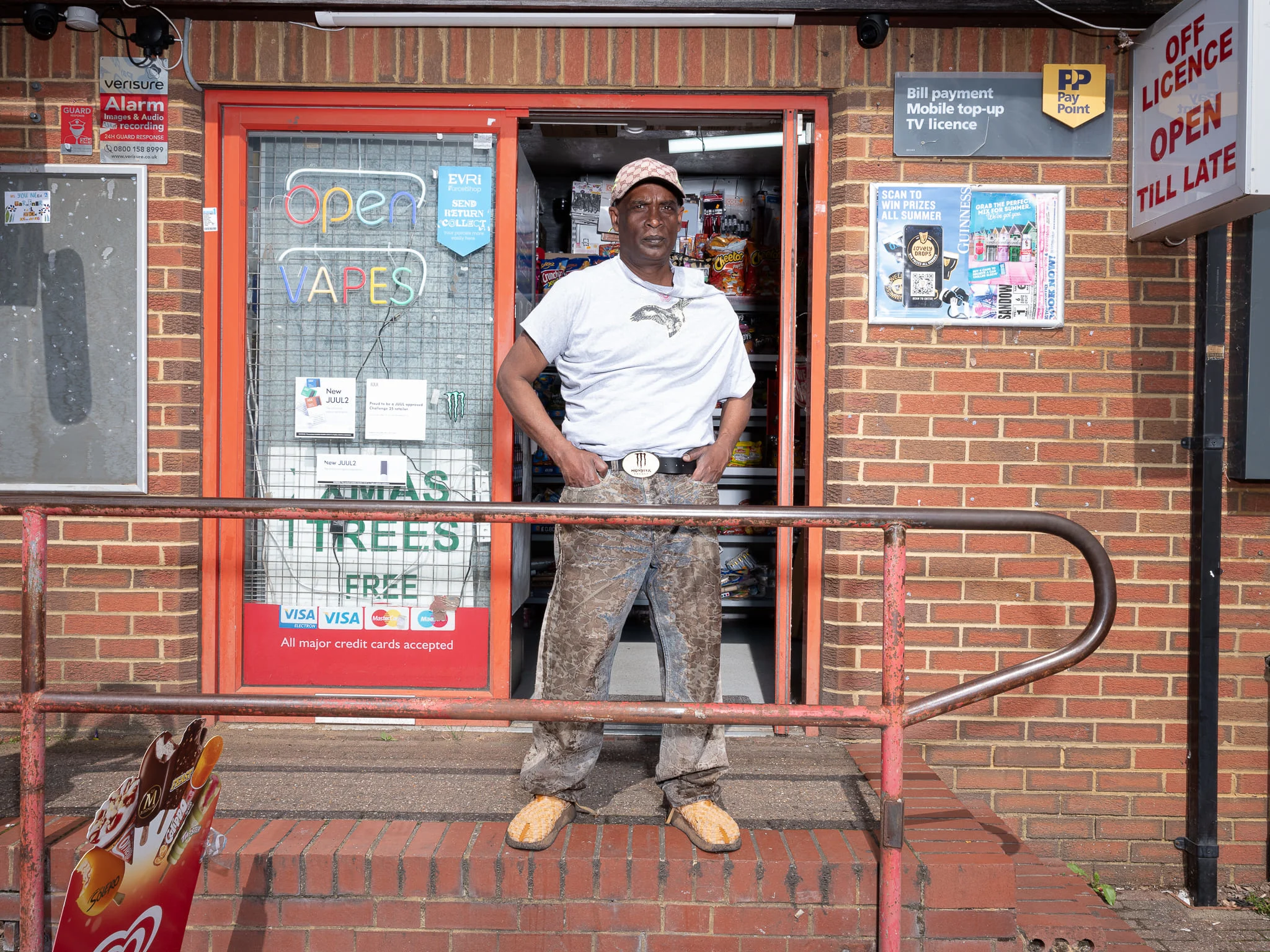
What began with serendipity is slowly growing into a consistent, revolutionary effort; the stylist now has a Notes app list overflowing with possible uncles he could shoot, and Khan and Core are intent on hosting blown-up versions of the photographs in a physical space; imagine a museum where South Asian uncles are the art. “I hope one day everyone involved, and all those who view it, is able to come in and see themselves up there,” Khan says, “and feel appreciated together.”
